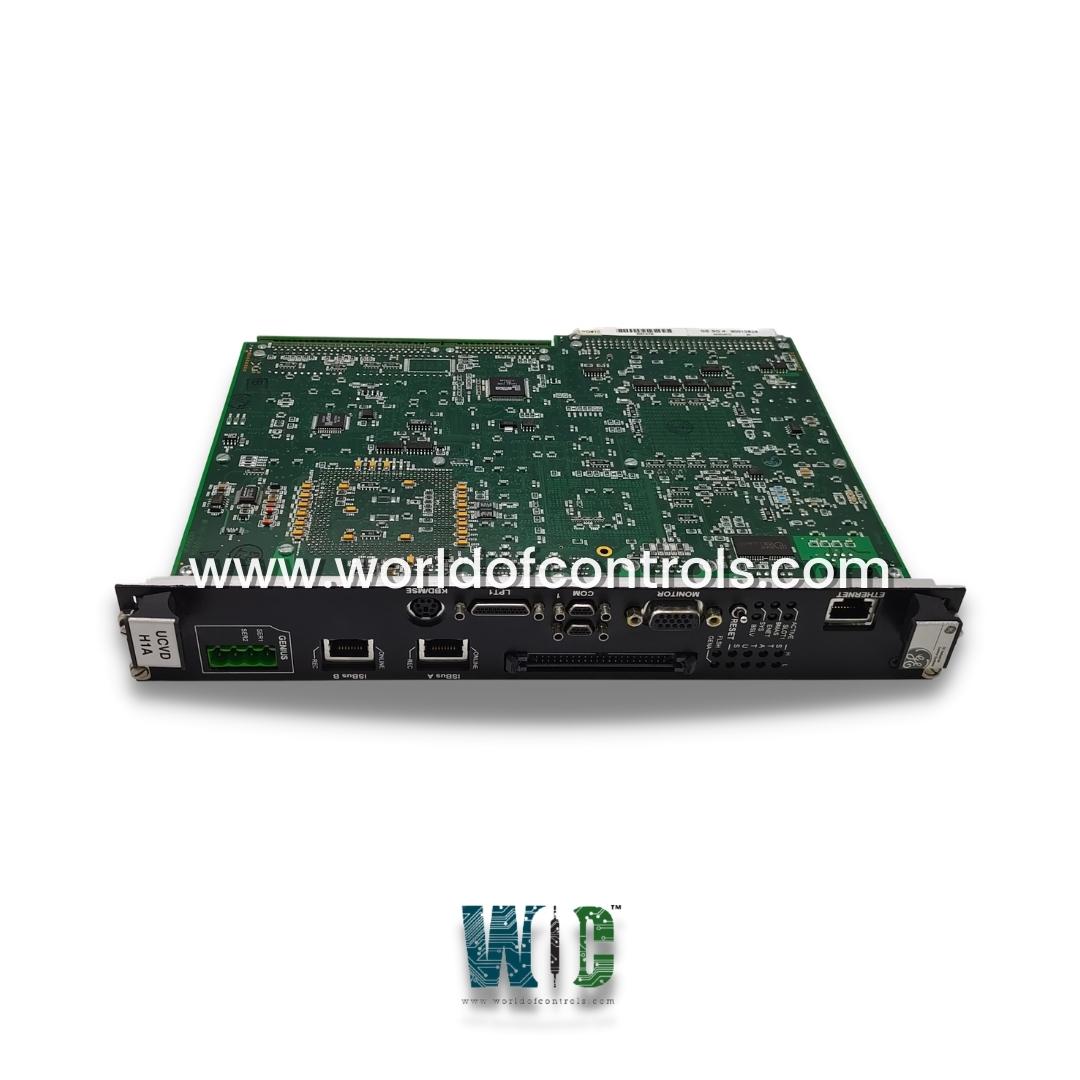
World Of Controls understands the criticality of your requirement and works towards reducing the lead time as much as possible.
IS215UCVDH2AA - Double-Slot Controller Board is available in stock which ships the same day.
IS215UCVDH2AA - Double-Slot Controller Board comes in UNUSED as well as REBUILT condition.
To avail our best deals for IS215UCVDH2AA - Double-Slot Controller Board, contact us and we will get back to you within 24 hours.
SPECIFICATIONS:
Part Number: IS215UCVDH2AA
Manufacturer: General Electric
Series: Mark VI
Product Type: Double-Slot Controller Board
Microprocessor: AMD-K6 300 MHz
Power supply voltage: 125 V dc
Voltage Range: 18 - 32 VDC
Memory: 16 MB DRAM
Operating System: QNX
Programming: Boolean
Ethernet Interface: Twisted pair 10BaseT
Power Requirements: +5 V dc, 6 A
Mounting: DIN-rail mounting
Technology: Surface mount
Operating temperature: -30 to 65°C
Size: 33.02 cm high x 17.8 cm
Repair: 3-7 Days
Availability: In Stock
Country of Origin: United States
Manual: GEH-6421H
FUNCTIONAL DESCRIPTION:
IS215UCVDH2AA is a Double-Slot Controller Board manufactured and designed by General Electric as part of the Mark VIe Series used in GE Distributed Gas Turbine Control Systems. The UCVDH2A is a two-slot board that operates with a 300 MHz AMD K6 processor, supported by 8 MB of flash memory and 16 MB of DRAM. It offers network connectivity to the UDH through a 10BaseT Ethernet port with an RJ-45 connector. The board features two columns of eight status LEDs that cycle in a rotating pattern during normal function. In the event of a malfunction, the LEDs flash a coded sequence to signal the specific error.
UCVD OPERATION:
The controller operates with software tailored for steam, gas, land-marine aero-derivative (LM), or balance of plant (BOP) applications. It is capable of processing up to 100,000 rungs or logic blocks per second, based on a standard mix of average-sized blocks. An external clock interrupt allows the controller to synchronize with the VCMI communication board’s clock within a margin of ±100 microseconds.
Data exchange between the controller and the control system database (CSDB) occurs via the VME bus through the VCMI communication board. In a simplex setup, this data includes process inputs and outputs from the I/O boards. In a TMR configuration, the data comprises voted inputs from input boards, direct inputs from simplex boards, calculated outputs awaiting voting by the output hardware, and internal state information that needs to be shared among controllers.
UCVD CONTROLLER RUNTIME ERRORS:
In addition to generating diagnostic alarms, the UCVB and the UCVD controller boards display status information on front panel LEDs. The Status LED group on these controllers contains eight segments in a two-column vertical layout, as shown in the following figure. These LEDs display controller errors if a problem occurs. The rightmost column makes up the lower hexadecimal digit, and the leftmost column makes up the upper digit (the least significant bits on the bottom). Numerical conversions are provided with the fault code definitions.
If the controller detects certain system errors (typically during boot-up or download), it displays flashing and non-flashing codes on these green status LEDs. These codes correspond to runtime errors listed in the toolbox help file. The following table describes the types of errors displayed by the LEDs.
WOC maintains one of the largest inventories of OEM replacement parts for GE Speedtronic Turbine Control Systems, offering a complete range of unused, rebuilt, and refurbished boards backed by a reliable warranty. In addition to supplying genuine components, we provide expert repair services for faulty boards and modules to ensure optimal system performance. Our team of skilled engineers and technicians is available 24/7 to support your maintenance, upgrade, and automation needs. For pricing, availability, and repair assistance, please contact our team by phone or email. WOC is committed to delivering fast, dependable, and cost-effective solutions for all your turbine control requirements.
What is the processing capability of the controller board?
The controller can handle up to 100,000 logic blocks or rungs per second, depending on the size and complexity of the logic. This ensures fast, reliable execution of turbine control functions. It is designed for high-speed processing required in industrial automation systems.
How does the controller communicate with the system?
Communication occurs via the VME bus through the VCMI communication board. The board also supports Ethernet connectivity through a 10BaseT RJ-45 interface.
How does the controller communicate with the system?
Data exchange occurs via the VME bus through the VCMI communication board, while Ethernet connectivity is provided via a 10BaseT RJ-45 interface. This allows integration with the control system database and other networked devices.